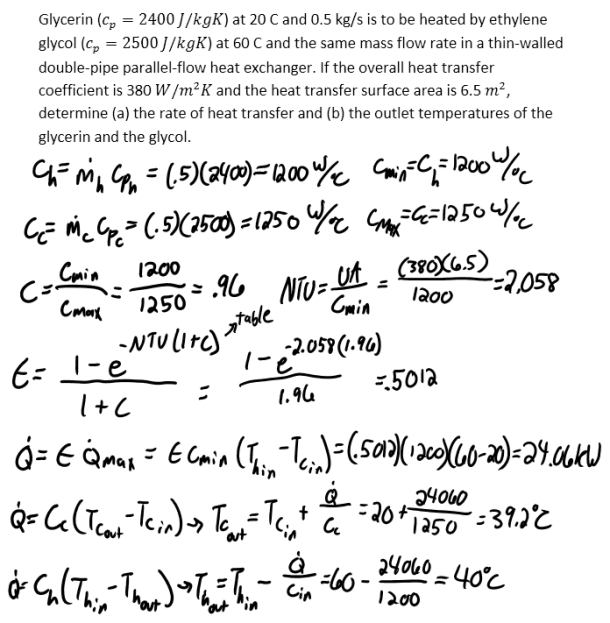Glycerin (c_p=2400 J/kgK) at 20 C and 0.5 kg/s is to be heated by ethylene glycol (c_p=2500 J/kgK) at 60 C and the same mass flow rate in a thin-walled double-pipe parallel-flow heat exchanger. If the overall heat transfer coefficient is 380 W/m^2 K and the heat transfer surface area is 6.5 m^2, determine (a) the rate of heat transfer and (b) the outlet temperatures of the glycerin and the glycol.

Glycerin (c_p=2400 J/kgK) at 20 C and 0.5 kg/s is to be heated by ethylene glycol (c_p=2500 J/kgK) at 60 C and the same mass flow rate in a thin-walled double-pipe parallel-flow heat exchanger. If the overall heat transfer coefficient is 380 W/m^2 K and the heat transfer surface area is 6.5 m^2, determine (a) the rate of heat transfer and (b) the outlet temperatures of the glycerin and the glycol.
